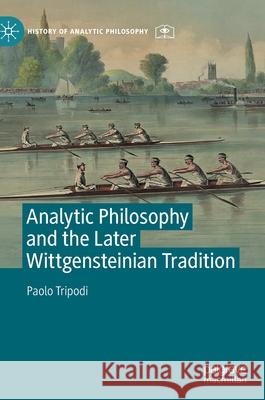Analytic Philosophy and the Later Wittgensteinian Tradition » książka
topmenu
Analytic Philosophy and the Later Wittgensteinian Tradition
ISBN-13: 9781137499899 / Angielski / Twarda / 2020 / 267 str.
Kategorie BISAC:
Wydawca:
Palgrave MacMillan
Język:
Angielski
ISBN-13:
9781137499899
Rok wydania:
2020
Wydanie:
2020
Numer serii:
000380819
Ilość stron:
267
Waga:
0.48 kg
Wymiary:
21.01 x 14.81 x 1.75
Oprawa:
Twarda
Wolumenów:
01
Dodatkowe informacje:
Wydanie ilustrowane











